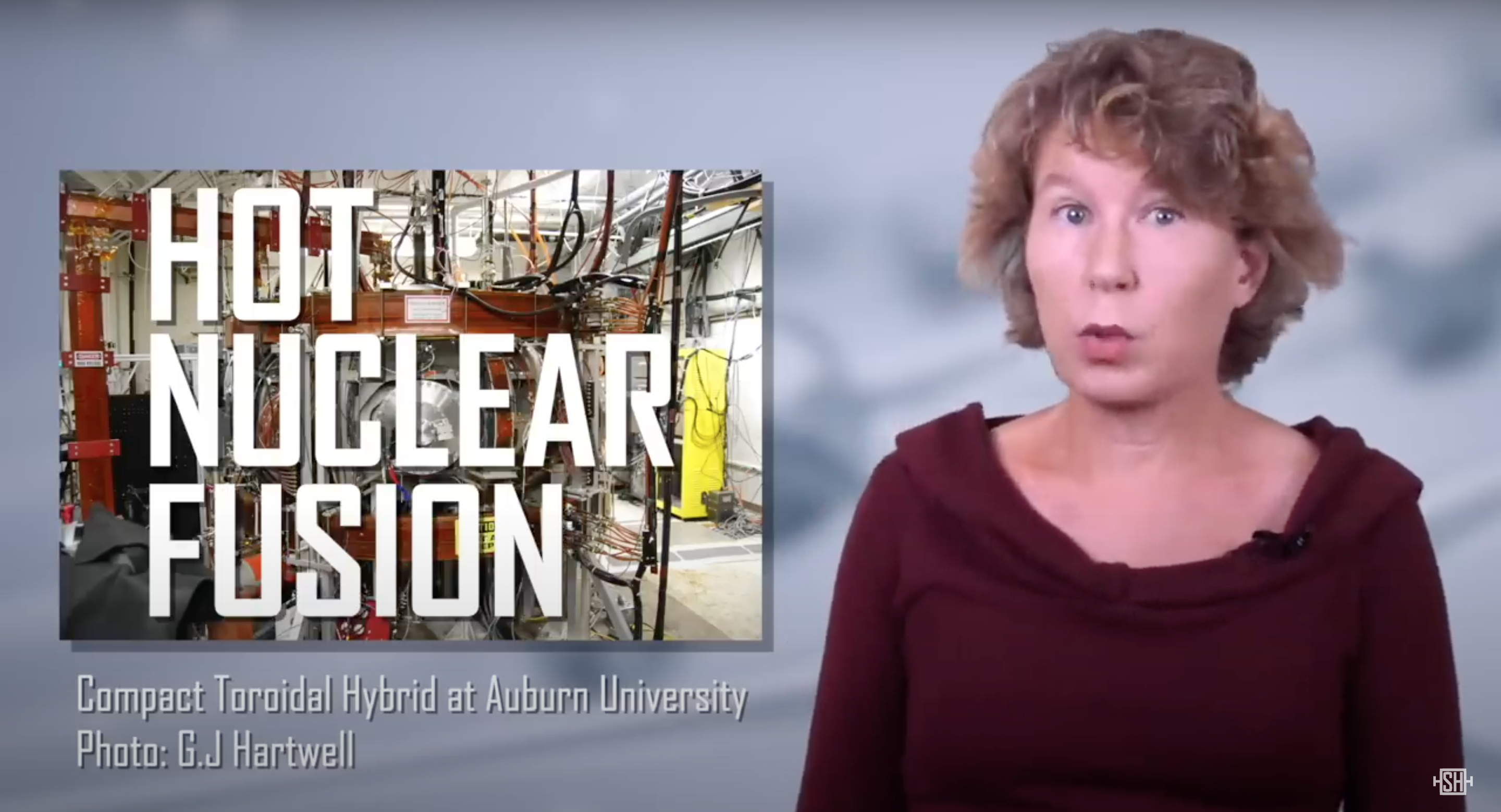
Sabine Hossenfelder, a Research Fellow at the Frankfurt Institute for Advanced Studies (FIAS) with a PhD in physics, takes a “no hype, no spin” objective view of Cold Fusion, its origins, obstacles, and its future in her latest YouTube “Science Without Gobbledygook” feature.
Hossenfelder notes the push in pull in the scientific community about the very existence and possibility of Cold Fusion and the significance of recent resurgence of research on the topic.
She explains the mechanisms behind fusion and the hurdles of overcoming the Coulomb barrier. This has been traditionally done by “heating a soup of nuclei to enormous temperatures, or slamming the nuclei into each other with lasers”—a process known as “hot nuclear fusion.” But she notes that this process is not energy-efficient and brings with it a host of other issues.
“But nuclear fusion is possible at far lower energy, and then it’s called cold fusion,” Hossenfelder says, explaining how protective electrons around the nuclei help shield the positive charges of the nuclei from each other, allowing them to approach each other. The problem, she states, is the electron shells are too large, thus “if you push these nuclei close together, then their electron shells will be much farther apart than the nuclei,” reducing the electron shells’ effectiveness with fusion if the nuclei float around. This problem may be solved if the electrons are replaced with muons—heavier versions of electrons that stick closer to nuclei and act as better nuclei shields.
Muon-catalyzed fusion was theorized in the 40s and successfully performed in the 50s, “it's cold fusion that actually works,” but “muons are unstable,” energy intense, and transient.
Another form of cold fusion exists, points out Hossenfelder, “which is actually a form of neutron production.” She explains the process of sending a “beam of deuterium ions into a metal” and how filling metal with deuterium sometimes causes nuclei to fuse. This fusion releases neutrons that can be used for a host of things including energy production.
However, the yield is too low to currently be useful. Hope is not lost, as Hossenfelder goes on to explain how scientists soon discovered that lowering the energy of incoming particles actually increased fusion rates. She states that the current scientific belief is that the metal’s lattice helps shield the deuterium nuclei from each other, lowering the Coulomb barrier, making fusion more likely. This was the discovery made in the 1980s, sparking the cold fusion controversy, as scientists posed the question: “what material could further reduce the Coulomb barrier?”
Pons and Fleischman famously tested this question, making headlines in 1989, when they claimed to have observed excess heat and the decay products of fusion reactions. Other labs were unable to reproduce their results, however, and their backgrounds in chemistry as opposed to physics further discredited them and cast a long shadow on the topic of Cold Fusion.
Hossenfelder delves into the checkered history of Cold Fusion, and the many researchers and institutions who have reached breakthroughs, only for their results to be unrepeatable. A number of hypotheses have been proposed for the difficulties in creating reproducible results, but no one has been able to determine which hypothesis is correct.
Because of these controversies, Cold Fusion has undergone rebranding, now being referred to as “Low Energy Nuclear Reactions (LENR)” and “solid-state fusion.”
Hossenfelder is skeptical that there will be a working cold fusion device in the next few years, but she sees potential and merit in continuing research, as there is too much at present that we do not fully understand. Others agree, as the case for Cold Fusion has been picked up by major institutions such as Google, NASA, and the US Navy.